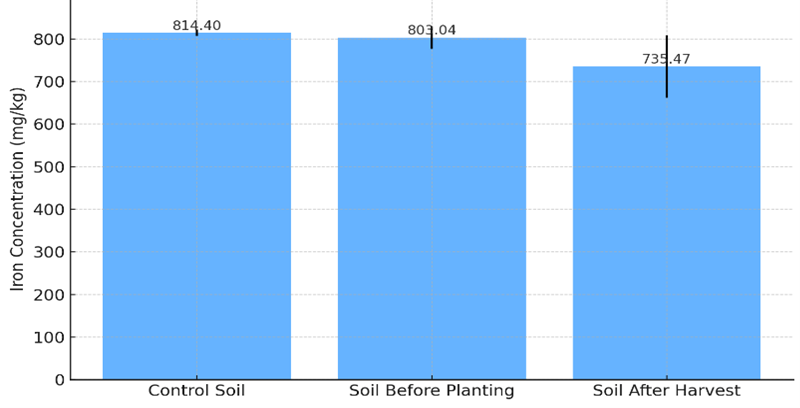Environmental and health risk assessment of cadmium, zinc,iron, copper in crops and soil at Enugu State dumpsite
Keywords:
Heavy metals, Risk assessment, Telfairia occidentalis, food safetyAbstract
Contamination of soils and food crops around the Ugwuaji dumpsite in Enugu State, Nigeria was evaluated. Zinc (Zn), copper (Cu), iron (Fe), and cadmium (Cd) were determined in seventy-three (73) samples, which included pre-planting and post-harvest soils, control soils, ash from the New Artisan abattoir, and edible parts of Dioscorea bulbifera, Zea mays, and Telfairia occidentalis. Samples were digested with aqua regia and analyzed using atomic absorption spectrophotometry (AAS). The analytical recovery was 96% with a relative standard deviation (RSD) of 5.7%. Soil properties showed pH values between 5.2-6.7 (slightly acidic), cation exchange capacity (CEC) of 8.7-14.5 cmol/kg, and organic matter contents of 1.84-3.92%. Post-harvest soils recorded 11.33 ± 2.51 mg/kg higher concentrations of Zn and 4.64 ± 0.69 mg/kg of Cu compared to control soils, while Fe decreased to 735.47 ± 73.20 mg/kg. Cadmium was detected in one soil sample (1.14 mg/kg) and in T. occidentalis (0.02-2.03 mg/kg), but was not detected in D. bulbifera and Z. mays. Pollution indices revealed high Cd contamination with enrichment factor (EF > 10), geoaccumulation index (Igeo > 2), contamination factor (CF > 6), and a pollution load index (PLI) of 1.65. The bioconcentration factor (BCF) of Zn in T. occidentalis was 3.98 with a translocation factor (TF) of 1.87, showing strong accumulation. Estimated daily intake (EDI) and total hazard index (THI) for adults were low (0.00042-0.00057), while children showed high THI values of 4.28 for Z. mays and 4.54 for D. bulbifera. Structural equation modeling indicated that soil pH (? = -0.62) influenced Cd mobility and its accumulation in T. occidentalis (? = 0.58), contributing to child-specific health risk (? = 0.79). These results highlight the need for risk control measures, including regulated ash application and crop-specific monitoring in waste-affected farmlands.

Published
How to Cite
Issue
Section
Copyright (c) 2025 Emmanuel Agboeze, Henry Okechukwu Agboeze, Theresa Orieji Uchechukwu, Anayo Vitus Ofordile, Chukwuebuka Gabriel Eze (Author)

This work is licensed under a Creative Commons Attribution 4.0 International License.







